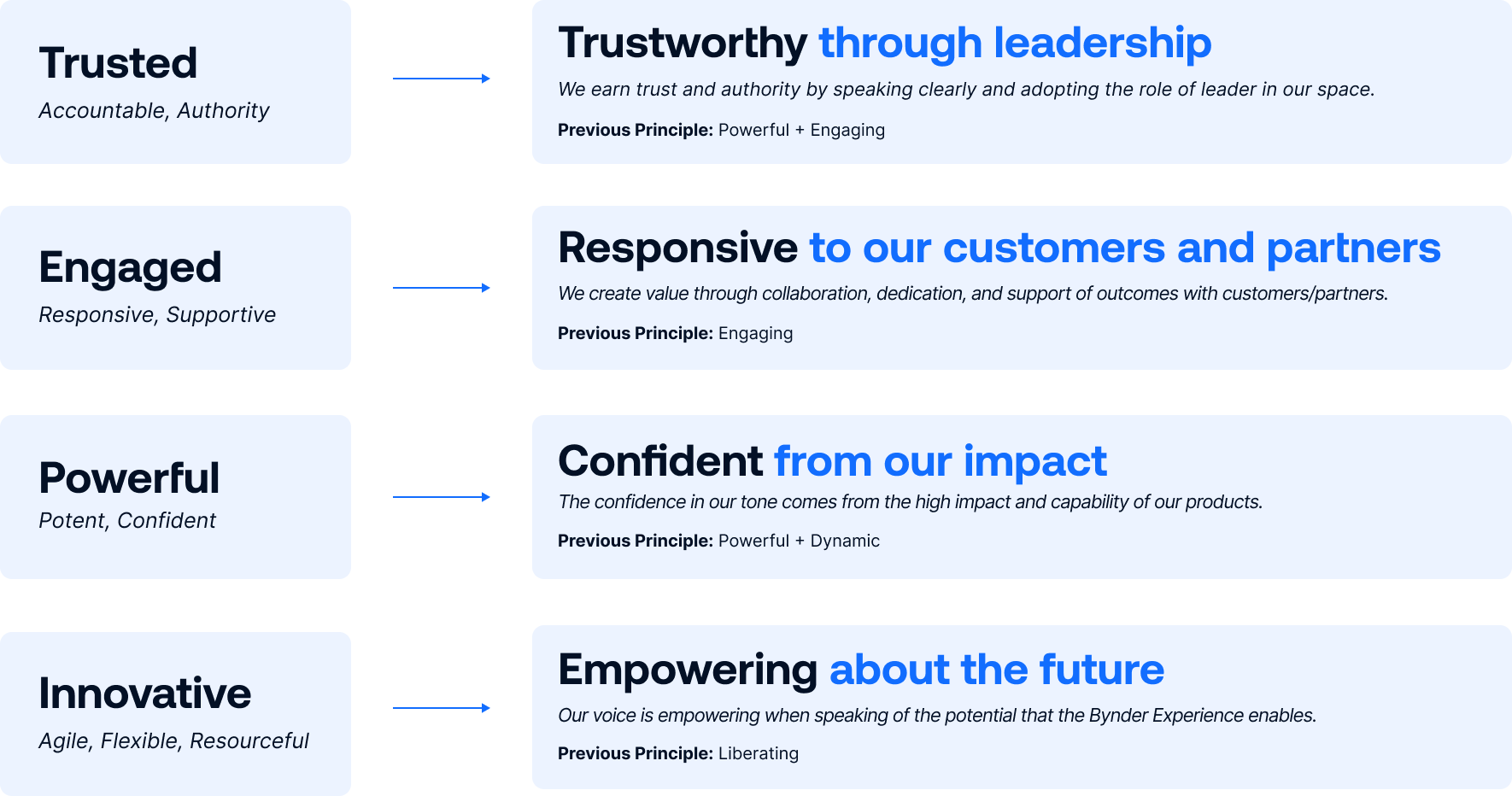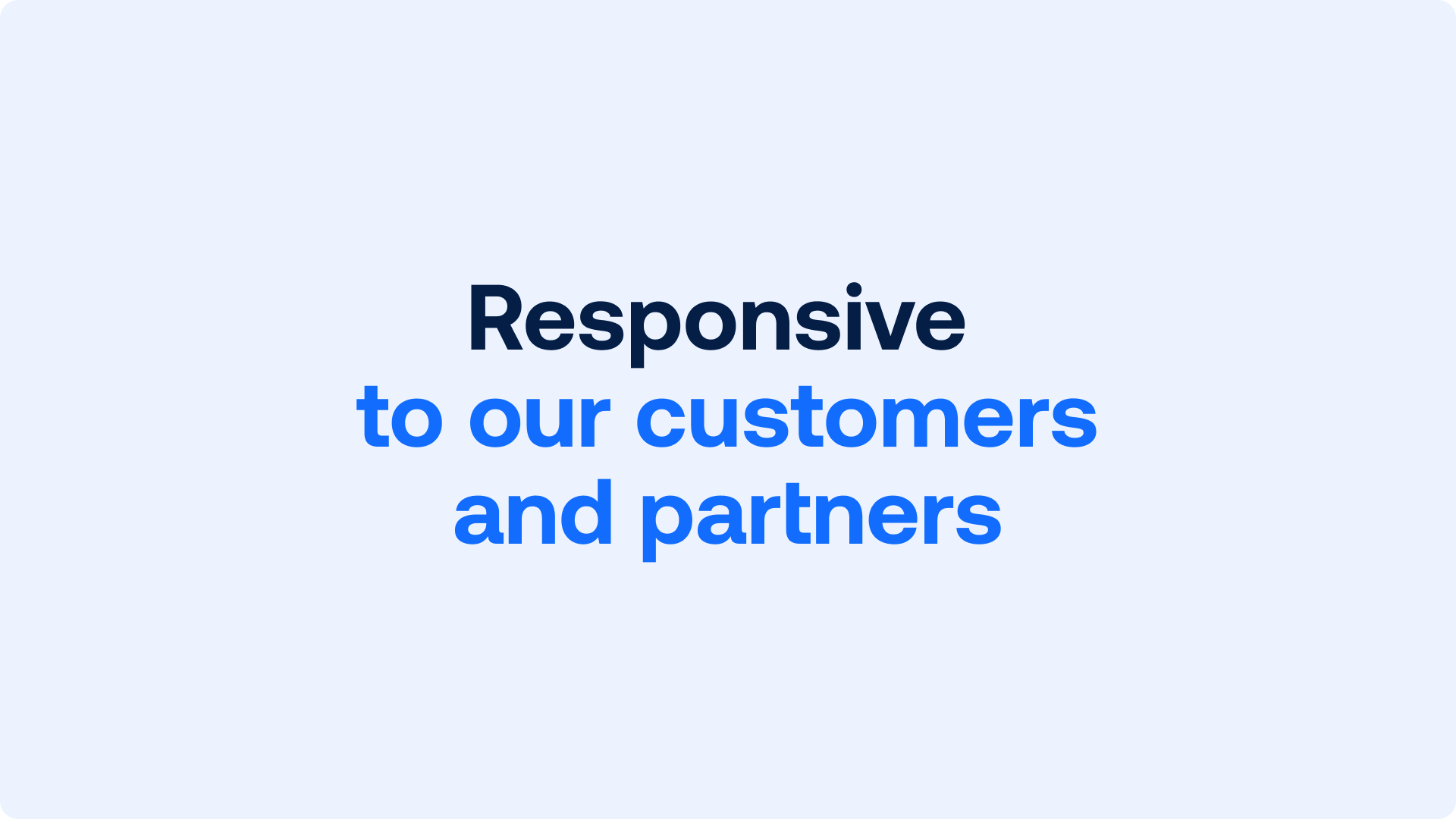
Tone of Voice
What is tone-of-voice?
Our tone-of-voice guides how our communication represents our brand personality and positioning. To claim our new enterprise positioning, we need to refine our brand voice and the tone principals that support it. This document serves as guidance on writing and sounding distinctly like Bynder.
Voice vs. tone
Voice is a holistic expression of the brand personality in our writing.
Our tone principles make up our collective voice. These principles can be dialed up or down to suit the audience, message, and medium.
What's the difference?
Just as people have a singular voice, or collective way they communicate, they also shift their tone depending on who they’re speaking to, when and where.
Voice = Tone principle #1 + Tone principle #2 + Tone principle #3
US vs. UK English
We write in US English. It gives us greater reach and increased familiarity amongst global audiences. This means:
Active vs. passive tense
We use the active voice whenever possible. It’s dynamic, engaging, and motivating. Passive voice Content creation needs to be scalable and automated. Active voice Scale and automate your content creation.
First person
When we communicate in the first person, we create a more personal and trusting connection. We can reference Bynder as “we’” “ours’” and “us”, but not “I”, “she”, “he” or “it”. In general, using “Bynder” is more appropriate when referring to the company or product as a whole.
Use of capitalization
We minimize the use of capital letters unless it is grammatically appropriate to use them. Reserve capitalization for abbreviations, the first word of every sentence, the names of people, products, titles, or businesses. Never use all caps for emphasis. When writing headings and titles, capitalize only the first word of the sentence and the first word after a full-stop.
Use of emojis
We avoid over-using emojis, limiting them to maximum one per social media post. We use them sparingly if they can illustrate or explain a point. For instance: “✅” being used to describe points in an example. Feel free to use emojis in internal communications, however.
Use of prepositions
In customer communication, we use “... with Bynder”. (“Your content thrives with Bynder.”). When we talk about the product, it is never “...in Bynder”.


What it means
We earn trust by delivering clarity and speaking as a leader in our space.
Clarity in our communication comes to life in different ways, depending on the audience.
Clarity = simplicity for low-DAM experience customers.
Clarity = efficiency for customers with more DAM experience.
How it impacts our writing
Our writing is direct, using the most clear language possible.
As a leader in our space, we write with certainty and authority.
Headlines earn a bolder and authoritative tone due to how concise they are. e.g. "Conquer content chaos."
We prioritize the pain reliever in headlines.
What we avoid
We avoid "burying the lead", and we always priortize the segment's greatest need + benefit.
No fluffy language that waters down our point and our trustworthiness.
Clouding clarity with overly-creative or expressionistic communication.

